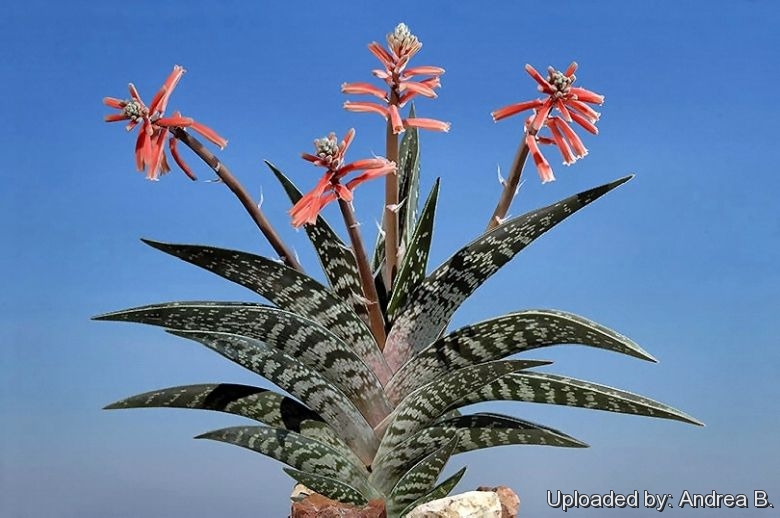
Aloe variegata (Tiger Aloe)
The name 'variegata' refers to the alternate white and green bands on the leaves. It makes an attractive and completely smooth plant without (usually) any teeth or sharp edges and does great on most window sills. Produces good orange-red flowers.
Origin and Habitat: Indigenous to the dry parts of Western South Africa (Cape Provinces, Namaqualand, Karoo and Orange Free State) and southern Namibia.
Habitat: It grows in shade of bushes on hard or stony ground.
Synonyms:
See all synonyms of Aloe variegata
back
Accepted name in llifle Database:Aloe variegata L.Sp. Pl. 1: 321. 1753 [1 May 1753]Synonymy: 5
back
Common Names include:
ENGLISH: Tiger Aloe, Partridge Breast Aloe, Guinea-fowl aloe, Cape Aloe
AFRIKAANS (Afrikaans): Kanniedood
ARABIC ( لعربية ): ألوى مخطط
CHINESE (中文): 什锦芦荟
FRENCH (Français): Gorge de perdrix, Bec de perroquet, Aloès perroquet
GERMAN (Deutsch): Tiger-Aloe
ITALIAN (Italiano): Aloe variegata
RUSSIAN (Русский): Алоэ пёстрое, Ало́э тигро́вое, Алое пестрое
SWEDISH (Svenska): Sebra-aloe
UPPER SORBIAN (Hornjoserbsce): Tigrowy alowej
Description: Aloe variegata is one of the best known, and most distinctive of the South African aloes. It grows readily and blows freely but irregularly during most of the winter and spring months and its foliage is beautiful both in its form and markings and its flowers are no less handsome. The name 'variegata' refers to the alternate white and green bands on the leaves. Plants are stemless, rarely solitary, and nearly always form clumps of a few rosettes that seldom exceeds 30(-40) cm tall.
Notes: Aloe variegata may be confused with two Aloes that are found in Namibia (Aloe dinteri and Aloe sladeniana). Natural hybrids with other species have been recorded.
Rosettes: Up to 3o cm tall and 20-30 cm wide, with 18-24 tri-farious leaves (arranged in three ranks).
Leaves: 10-15 cm long and 3-6 cm broad, lanceolate-deltoid, turning back at the ends, channelled, with a 'V' shape in cross section, fleshy, entire, smooth dark-green or brown, irregularly variegated alternately dark green and whitish somewhat like the feathers on a partridges breast, a distinctive keel is present on the lower leaf surface. The leaf margins are cartilaginous and sporadically armed with tiny white teeth.
Inflorescence: Flowering stalk about 30 cm tall, raceme simple or with 1-2 branched, cylindrical 10-20 cm long with 10 to 30 flowers.
Flowers: 35-45 mm long, base truncate, relatively large and hanging loosely from the inflorescence, either compact (high light situations) or spread out (low light situations)usually orange, red or flesh-pink with green tips (but may vary in colour from a dull-pink to red and seldom yellow ) Bracts ovate-acuminate up to 15 mm long and 7 mm wide; Pedicel 4-7 mm long. Tepals free for 5-7 mm; Stamen exserted 1-2 mm. stigma simple.
Blooming season: Winter or early spring.
Seeds: furnished with very large 'wings' presumably to increase wind dispersion.
Chromosome number: 2n = 14
Notes: hybridparent of: × Gasteraloe sculptilis G.D.Rowley ex L.E.Newton Haseltonia 5: 94. 1998 [1997 publ. 1998]
Bibliography: Major references and further lectures
1) Hans Bornman, David S. Hardy “Aloes of the South African veld” Voortrekkerpers, 1971 Page 83
2) Yvonne Cave “Succulents for the contemporary garden” Timber Press, 01/gen/2003
3) David Hardy, Anita Fabian, Gerrit Germishuizen “Succulents of the Transvaal” Southern Book Publishers, 1992. page 22
4) Urs Eggli “Illustrated Handbook of Suculent Plants: Monocotyledons” Springer, 2001. Pages 114-115
5) Dr J.P. Roux “Flora of South Africa” (2003)
6) Philip Miller “The gardeners dictionary” 1835
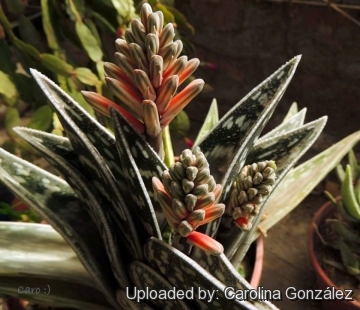 Aloe variegata Photo by: Carolina González
Aloe variegata Photo by: Carolina González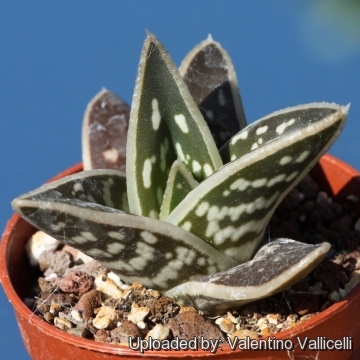 A young seedling from Dikkop Flats, Eastern Cape, South Africa Photo by: Valentino Vallicelli
A young seedling from Dikkop Flats, Eastern Cape, South Africa Photo by: Valentino Vallicelli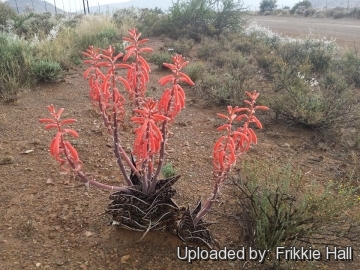 Aloe variegata Photo by: Frikkie Hall
Aloe variegata Photo by: Frikkie Hall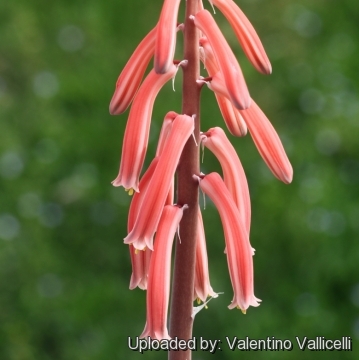 Aloe variegata Photo by: Valentino Vallicelli
Aloe variegata Photo by: Valentino Vallicelli Aloe variegata Photo by: Valentino Vallicelli
Aloe variegata Photo by: Valentino Vallicelli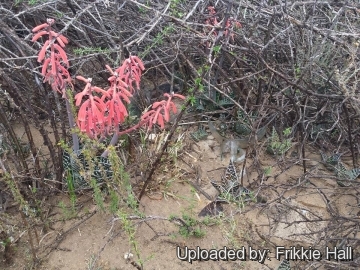 in habitat Photo by: Frikkie Hall
in habitat Photo by: Frikkie Hall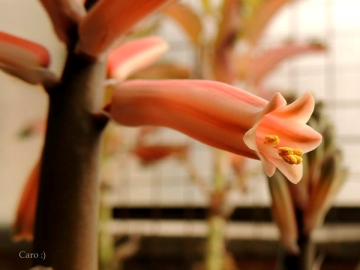 Aloe variegata Photo by: Carolina González
Aloe variegata Photo by: Carolina González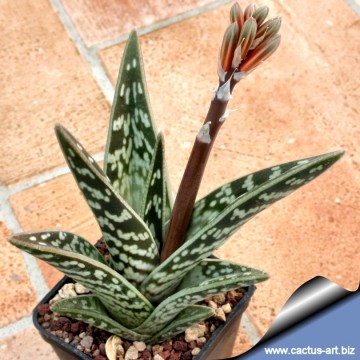 Aloe variegata Photo by: Cactus Art
Aloe variegata Photo by: Cactus ArtCultivation and Propagation: Aloe variegata is easy to grow in light shade and make a great, almost no care houseplant although, without bright enough lighting can become leggy and pale but looks it's best when grown in full sun. Its main growing periods are spring and Autumn. Keep relatively dry, careful watering is required, as it is prone to rot if overwatered, especially in the winter months. Frost protection is required (but plant can tolerate -7°C for short period). Thrives in medium to large sized pots and need a drained soil.
Maintenance: Removal of old flower stalks; During the winter months, the plants should be grown cool to initiate flower development (about 5-10°C ).
Reproduction: Usually via offsets (cuttings), it is also possible the propagation from seed which germinates easily if sown in well drained soil and covered lightly with fine sand. Seedlings grow fast, reaching flowering size in three to four years. Seeds must be sown as fresh as possible. Fresh seeds germinate quickly at 18°C.
Your Photos

by Cactus Art

by Valentino Vallicelli
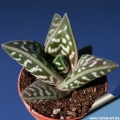
by Cactus Art






















